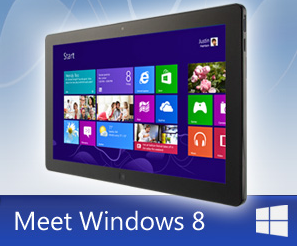Analyzing the Windows 8 sales numbers: Chicken, meet egg

For the past few months -- really, since the day Windows 8 and Windows RT became commercially available in late October 2012 -- there have been lots of attempts to calculate how it's really selling.

Microsoft officials have said Windows 8 is selling at the same clip as Windows 7 did.
Microsoft's figures are measurements of Windows upgrades, which are sold at a discount to existing Windows users, plus licenses sold to OEMs. (OEMs don't buy Windows licenses on a "just-in-time" basis, I've heard. Instead, they attempt to predict what they'll sell and then order a set number of licenses at least a month ahead of time, according to one source of mine.) Microsoft's latest claim of 60 million Windows 8 licenses sold might or might not include sales of Windows RT, too. (Company officials have declined to say.)
NPD tracks a different set of numbers -- copies of Windows sold preinstalled on PCs sold at retail. (NPD's numbers include neither Surface RT sales nor in-store Windows upgrade sales.) Neither Microsoft's nor NPD's estimates includes sales of Windows through volume license agreements, which is how users like the U.S. Department of Defense recently bought Windows (and Office) licenses, which will allow the agency to deploy Windows 8 and/or to downgrade to an older version of Windows.
In addition to the discrepancies around what's being counted, no one seems to agree which is the chicken and which is the egg in the Windows-sales equation. By that, I mean the set of circumstances which one Microsoft watcher considers to be the "cause" is seen by another as the "effect."
Example: Are Windows PCs failing to sell as well as in previous years because users are confused by and unhappy with Windows 8? Or is it that PC sales were already in free-fall and it's only the release of Windows 8 that's keeping them even marginally afloat?
Another: Was it the shortage of touch-enabled Windows 8 and Windows RT PCs and tabets that led to lower-than-expected retail sales this past holiday season? Or was it the higher price Windows OEMs are charging for touch-enabled PCs and tablets that have led to less-than-stellar sales?
My personal favorite: Microsoft officials say users have been actively seeking out touch-enabled Windows 8 PCs and tablets. But maybe they're just looking for new Windows tablets and PCs and soon (once existing non-touch-enabled PC inventories are depleted) will have no choice but to get touch-enabled ones.
And one more: Did Microsoft's decision to advance the date when it started encroaching on OEM territory by selling the Surface through retailers like Best Buy and Staples lead to some of these OEMs' lessening enthusiasm for Windows 8 and Windows RT? Or did Microsoft have no choice but to push the Surfaces through more retailers because of the dearth of Windows 8 and Windows RT tablets and PCs from OEMs in retail stores?
Outside of a chosen few inside Microsoft, no one really knows how many Surface RT devices Microsoft has sold, or how many copies of Windows 8 have been activated by consumers. There've been lots of guesses, educated and otherwise. I'd argue the muddling of causes and effects in all these estimates adds another layer of complexity to attempts to determine whether Windows 8 and Windows RT are "successes" or "failures."